There are so many beauties surrounding those who find themselves in the midst of the Sultanahmet Square. One may take a seat across from the German Fountain and listen to the city through the water flowing from its taps. Or dream while
king at the domes of Hagia Sophia. While those who take a step towards the structures built by the famous vizier of Sulaiman the Magnificent, Ibrahim Pasha, and which is currently being used today as the Islamic Arts Museum, welcomes its visitors in a completely different atmosphere: The stalls prepared for the month of Ramadan including handmade products of glazed tiles, paper, silver, woodwork and materials all gradually rear up joy within us. The exhibition that is to embrace us is called The Seljuks. The Seljuks that had ruled Anatolia between the years of 1040-1308 had a profound depth of civilisation as the final Turkish-Islamic State before the Ottoman Empire. The most prominent message conveyed to us through this exhibition are the traces of the Seljuk civilisation. As well as its military, state governance, economy and social order, the works at this exhibition provide a glimpse into the spirit of the understanding of man and universe. Colours, shapes, designs do not form into such beauty on its own. They represent the subconscious of the understanding of civilisation. I currently stand before a sun panel. The turquoise lines embedded over a black background form circles of stars within themselves. This interpretation that Seljuk tiles has for the colour blue does not only repose the eye but also sets fire to the imagination. Just like a piece in space within the deepness of its depths…

It is neither ruptured nor is it forlorn. We will never know which master emitted it from soil with such feelings, giving it as a gift to the eternity of time. However, everything in art develops and widens within the eternal space of illusion and halters at the sound of music. Initially, one perceives the three suns with a leaf shape settling
within its centre with the accordance of a triangle, yet, one is mistaken. Once you lose yourself within it, you realise that the golden-leaf suns embrace this painting and eternally does so. Thus, the search for immortality sets off… In fact, every part is whole and the Seljuks did not only settled in spreading out throughout lands. They also united the culture and civilisations they brought from Central Asia, kneaded it with Islam and fermented it with Anatolia together in with a unique synthesis. What are the Seljuks? If I was to answer the question of which work of art in this exhibition defines the Seljuks, I would surely say that it is this painting. However, I will also quickly come to realise that the answer is lacking and would step towards the other works of art on exhibition. Shaping art with nature, committment to nature and the figures it extorts from it all is what becomes prominent with the Seljuks. The use of flowers, animals, human figures and particularly the use of double-headed eagles draws much attention. If one was to extract the animals, plants and human figures from this art, it would lose strength and become bereft. On the other hand, the shapes engraved onto marble, wood, soil and ceramics also has an amateurism that baffles one. However, the truth is that this fact itself elevates this form of art. There are many pieces of artwork here that will ensure you to visualise the era the Seljuks lived in. There are many books written in different types beginning with the Masnawi. The carpets, rugs, woodwork and marble engravings openly challenge all forms of annihiliation. The technical measurement devices scattered in between show signs of knowledge and intelligence behind its making. The colours are always the music of time.
The Seljuks gradually depart from the modest soil colour, using sea green and heading towards the colour of torquoise. The colour brown dominating the wooden chestboxes become lighter as window casements while the red in the carpets transit to the colour blue. However, this colour finds its true spirit in glazed tiles. This colour, which continues to live on in the Seljuk cities, greets the domes of the heavens. The illustrations of man wrapped within the form of a bird, the lions depicted on marbles, the figures of fathers advising their sons while holding an eagle on their right wrist, and the spirit effused from mystics like Ibn-i Arabi, Sadreddin Konevi and Mawlana all infuse the multicolours of confidence of the Seljuks. In an article written about the building this exhibition is being held within, Ahmet Hamdi Tanpinar speaks of the abundance of civilisation of the Sultanahmet Square. He further states how the Egyptians, Romans, Byzantines, Ottomans and their civilisations all united here in this place. And now, here is another unique civilisation with its distinguished samples. Today’s Turkey perhaps will speedily understand itself better with this transition from the Seljuks to the Ottomans. As every single exhibition is the speedy passage of the past before our eyes.
A Sun Panel: The Seljuks
Examples of the rich cultural accumulation of the Seljuks, which had enlightened Anatolia like a sun for many centuries, will be exhibited until November 18 at the Turkish and Islamic Arts Museum.





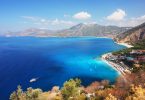
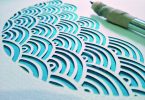
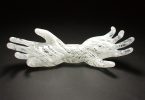
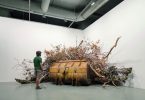
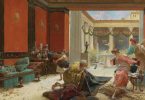
Leave a Comment